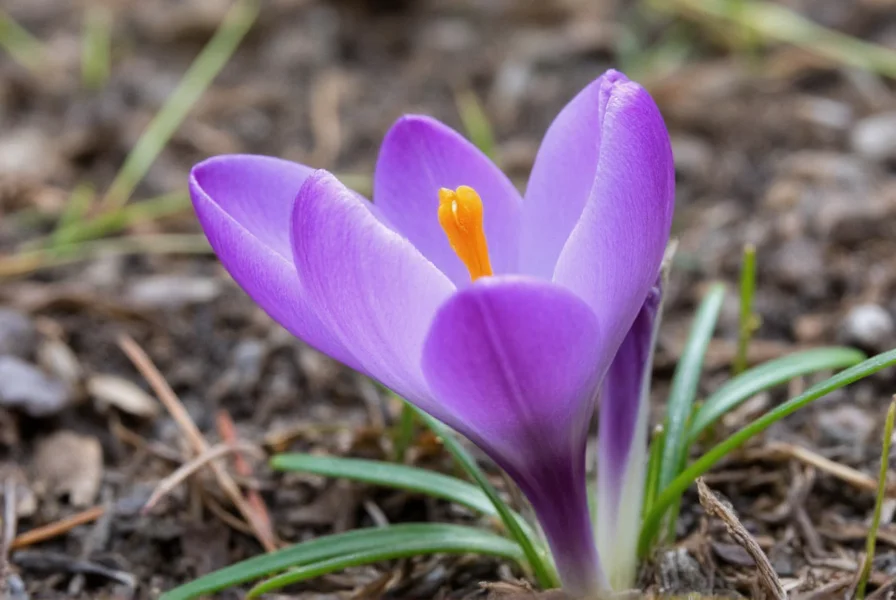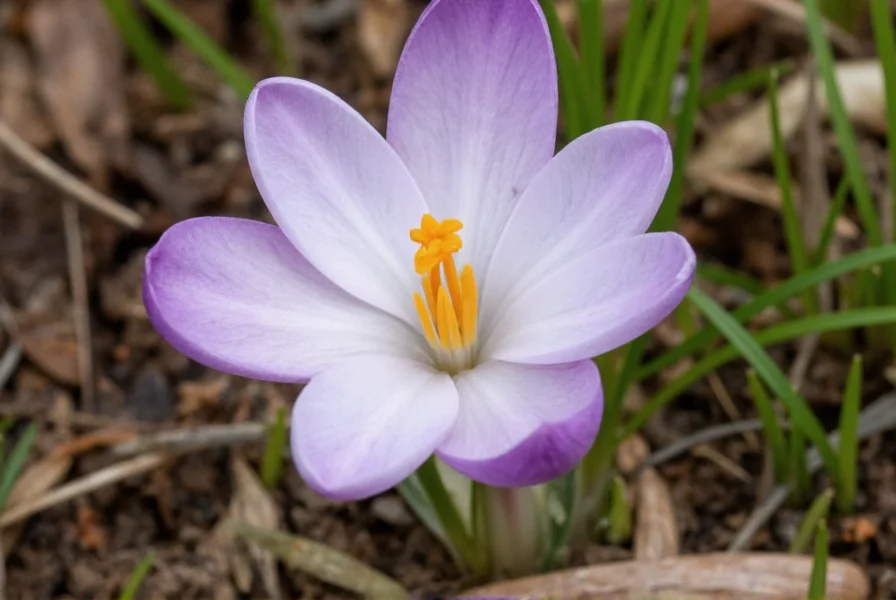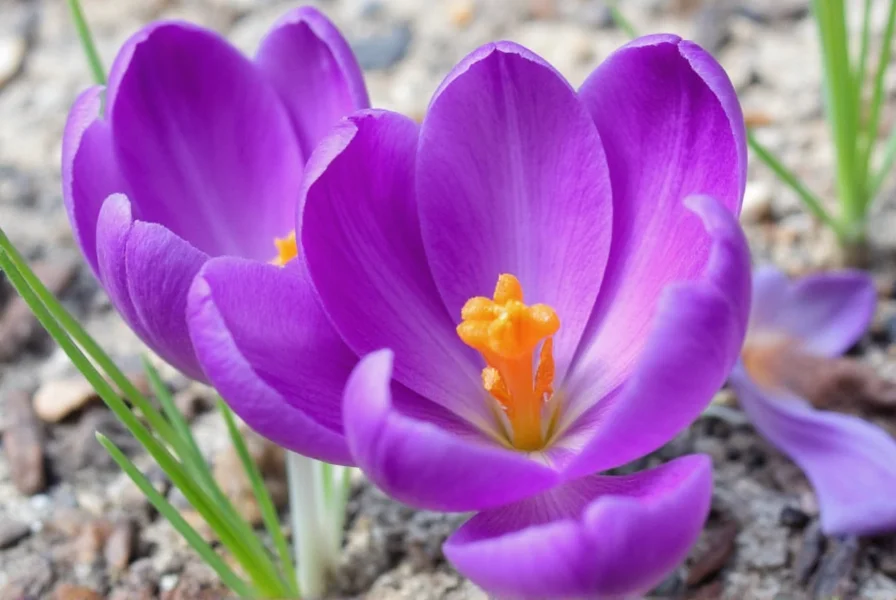When discussing the stigma of saffron crocus, we must first clarify a widespread botanical misunderstanding. The term "stigma" here refers literally to the thread-like red structures in the saffron crocus flower—not to any negative perception. Each Crocus sativus bloom produces three precious stigmas, which become the world's most expensive spice when dried. The confusion arises because many people mistakenly associate saffron crocus with the poisonous autumn crocus, creating unwarranted safety concerns about genuine saffron.
Understanding the Botanical Confusion
The critical distinction lies in recognizing that saffron crocus (Crocus sativus) and autumn crocus (Colchicum autumnale) are completely different plants. Despite their similar common names and autumn blooming periods, they belong to separate plant families with dramatically different properties:
| Characteristic | Saffron Crocus (Crocus sativus) | Autumn Crocus (Colchicum autumnale) |
|---|---|---|
| Plant Family | Iridaceae | Colchicaceae |
| Toxicity | Non-toxic (edible stigmas) | Highly toxic (contains colchicine) |
| Flower Structure | Three red stigmas, purple petals | Six stamens, various petal colors |
| Harvest Period | Late summer to early autumn | Late autumn |
| Economic Value | World's most expensive spice | Medicinal uses (with extreme caution) |
Why the Misconception Persists
The persistent misconceptions about saffron crocus safety primarily stem from:
- Nomenclature confusion: Both plants share "crocus" in their common names despite no close botanical relationship
- Seasonal overlap: Both bloom in autumn, creating visual confusion for non-experts
- Media sensationalism: Rare poisoning cases involving autumn crocus sometimes get misreported as saffron incidents
- Illicit saffron substitutes: Some unscrupulous sellers have used autumn crocus stamens to adulterate saffron, creating genuine safety concerns about counterfeit products
Understanding the difference between saffron crocus and autumn crocus is essential for consumer safety. While Crocus sativus stigmas have been safely consumed for millennia, Colchicum autumnale contains colchicine—a compound that's therapeutic in precise medical doses but deadly when misused.
Scientific Facts About Genuine Saffron
Crocus sativus has been cultivated for over 3,000 years across Mediterranean and Asian regions. The plant's economic importance comes entirely from its stigmas, which contain crocin (providing color), picrocrocin (providing flavor), and safranal (providing aroma). Modern research confirms saffron's safety profile when properly harvested:
- No documented cases of toxicity from authentic saffron consumption
- Recognized as Generally Recognized As Safe (GRAS) by food safety authorities worldwide
- Requires approximately 150,000 flowers to produce just 1 kilogram of dried saffron
- Strict quality control standards exist through ISO 3632 certification

Addressing Safety Concerns
When discussing saffron crocus safety concerns, we must distinguish between:
- Genuine saffron: Always safe when obtained from reputable sources
- Adulterated saffron: May contain toxic substitutes like autumn crocus stamens
- Autumn crocus misidentification: Accidental consumption of the toxic plant
The European Food Safety Authority notes that saffron poisoning cases almost always involve either deliberate misuse of autumn crocus or consumption of severely adulterated products. Reputable saffron producers implement multiple verification steps to prevent contamination with toxic look-alikes.
How to Identify Authentic Saffron
Consumers can avoid confusion by learning to identify genuine saffron crocus products:
- Look for whole threads rather than powder (powder is easily adulterated)
- Authentic saffron threads have a trumpet-shaped end
- Real saffron dissolves slowly in warm water, creating a golden-yellow color
- Purchase from certified suppliers with traceability documentation
- Avoid suspiciously cheap "saffron" (real saffron costs $5,000-$10,000 per kilogram)

Historical Context and Cultural Significance
The enduring value of saffron across civilizations—from ancient Egyptian medicine to Renaissance European cuisine—demonstrates society's long-standing recognition of Crocus sativus benefits. Historical records show no widespread avoidance of genuine saffron due to safety concerns. Instead, saffron appears in:
- Ancient Egyptian medical papyri as a healing agent
- Middle Eastern royal courts as a status symbol
- European apothecary texts for mood regulation
- Traditional Indian and Chinese medicine systems
The misconception about saffron crocus stigma likely emerged only recently through botanical confusion rather than historical evidence of danger.
Conclusion: Separating Fact from Fiction
The notion of stigma surrounding saffron crocus represents a modern misunderstanding rather than any legitimate historical or scientific concern. Crocus sativus remains one of humanity's safest and most valuable botanical resources when properly identified and processed. By understanding the critical differences between saffron crocus and its toxic look-alike, consumers can confidently enjoy this ancient spice without unwarranted fear. The real challenge lies in ensuring product authenticity through reputable sourcing rather than concerns about the plant itself.
Is saffron crocus actually toxic or dangerous?
No, saffron crocus (Crocus sativus) is not toxic. The confusion stems from people mistakenly associating it with autumn crocus (Colchicum autumnale), which is highly toxic. Genuine saffron from Crocus sativus has been safely consumed for thousands of years and is recognized as safe by food safety authorities worldwide.
Why do people confuse saffron crocus with toxic plants?
The confusion occurs because both saffron crocus (Crocus sativus) and autumn crocus (Colchicum autumnale) bloom in autumn and share "crocus" in their common names, despite belonging to different plant families. Additionally, some unscrupulous sellers have used autumn crocus parts to adulterate saffron, creating genuine safety concerns about counterfeit products.
How can I tell if my saffron is authentic and safe?
Authentic saffron has distinctive trumpet-shaped thread ends, dissolves slowly in warm water to create golden-yellow color (not instant red), and comes with traceability documentation. Purchase from reputable suppliers, avoid suspiciously cheap products (real saffron costs $5,000-$10,000 per kilogram), and look for ISO 3632 certification. Whole threads are less likely to be adulterated than powder.
What's the difference between saffron crocus and autumn crocus?
Saffron crocus (Crocus sativus) belongs to the Iridaceae family, produces three red stigmas that become saffron spice, and is non-toxic. Autumn crocus (Colchicum autumnale) belongs to the Colchicaceae family, contains toxic colchicine, and has six stamens instead of distinctive red stigmas. They bloom at slightly different times and have different flower structures despite both being called "crocus".
Has saffron ever caused poisoning incidents?
Documented cases of saffron poisoning are extremely rare and almost always involve either deliberate misuse of autumn crocus (mistaken for saffron) or consumption of severely adulterated products containing toxic substitutes. Authentic saffron from Crocus sativus has an excellent safety record spanning thousands of years of culinary and medicinal use.











 浙公网安备
33010002000092号
浙公网安备
33010002000092号 浙B2-20120091-4
浙B2-20120091-4